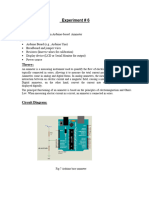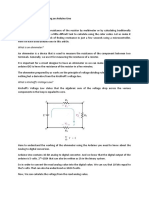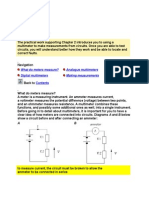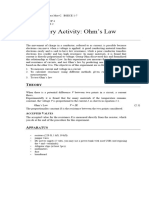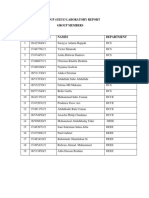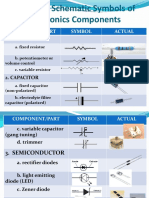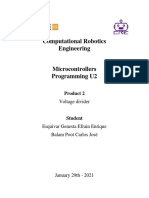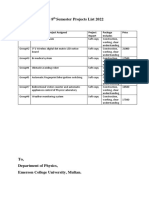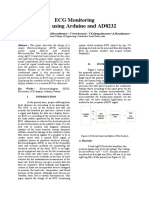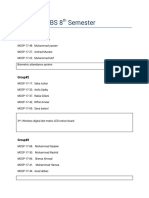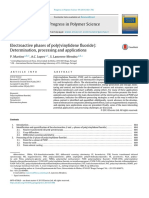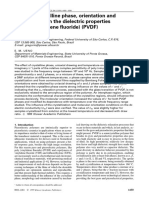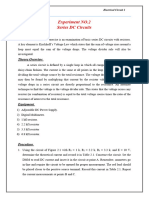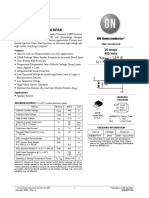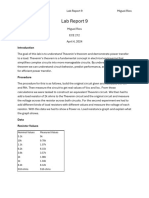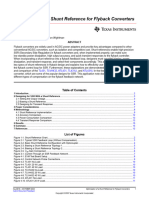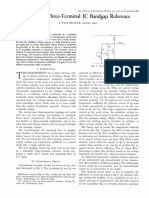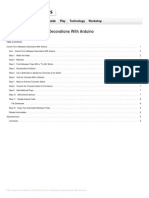Construction of Microcontroller Wattmeter to Measure Voltage,
Current and Power Consumption
As electronics physics, we always depend upon meters/instruments to measure and analyse the
working of a circuit. Starting with a simple multimeter to a complex power quality analysers or
DSOs everything has their own unique applications. Most of these meters are readily available
and can be purchased based on the parameters to be measured and their accuracy. But sometimes
we might end up in a situation where we need to build our own meters. Say for instance you are
working on a solar PV project and you would like to calculate the power consumption of your
load, in such scenarios we can build our own Wattmeter using a simple microcontroller platform
like Arduino.
Building your own meters not only bring down the cost of testing, but also gives us room to ease
the process of testing. Like, a wattmeter built using Arduino can easily be tweaked to monitor the
results on Serial monitor and plot a graph on Serial plotter or add an SD card to automatically log
the values of voltage, current and power at pre-defined intervals. Sounds interesting right!? So
let’s get started...
Materials Required
Arduino Nano
LM358 Op-Amp
7805 Voltage regulator
16*2 LCD display
0.22 ohm 2Watt shunt resistor
10k Trimmer pot
10k,20k,2.2k,1k Resistors
0.1uF Capacitors
Test Load
Perf board or breadboard
Soldering kit (optional)
�Setup Transformer
Capacitor
Diode
7805
Circuit Diagram
The complete circuit diagram of the arduino wattmeter project is given below.
For ease of understanding the arduino wattmeter circuit is split into two units. The upper part of
the circuit is the measuring unit and the lower part of the circuit is the computation and display
unit. For people who are new to this type of circuits followed the labels. Example +5V is label
which means that all the pins to which label is connected to should be considered as they are
connected together. Labels are normally used to make the circuit diagram look neat.
�The circuit is designed to fit into systems operating between 0-24V with a current range of 0-1A
keeping in mind the specification of a Solar PV. But you can easily extend the range once you
understand the working of the circuit. The underlying principle behind the circuit is to measure
the voltage across the load and current through it to calculate the power consumes by it. All the
measured values will be displayed in a 16*2 Alphanumeric LCD.
Further below let’s split the circuit into small segments so that we can get a clear picture of how
the circuit is indented to work.
Measuring Unit
The measuring unit consists of a potential divider to help us measure the voltage and a shut
resistor with a Non-Inverting Op-amp is used to help us measure the current through the circuit.
The potential divider part from the above circuit is shown below
Here the Input voltage is represent by Vcc, as told earlier we are designing the circuit for a
voltage range from 0V to 24V. But a microcontroller like Arduino cannot measure such high
values of voltage; it can only measure voltage from 0-5V. So we have to map (convert) the
voltage range of 0-24V to 0-5V. This can be easily done by using a potential divider circuit as
shown below. The resistor 10k and 2.2k together forms the potential divider circuit. The output
voltage of a potential divider can be calculated using the below formulae. The same be used to
�decide the value of your resistors, you can use our online calculator to calculate value of resistor
if you are re-designing the circuit.
Vout = (Vin × R2) / (R1 + R2)
The mapped 0-5V can be obtained from the middle part which is labelled as Voltage. This
mapped voltage can then be fed to the Arduino Analog pin later.
Next we have to measure the current through the LOAD. As we know microcontrollers can read
only analog voltage, so we need to somehow convert the value of current to voltage. It can be
done by simply adding a resistor (shunt resistor) in the path which according to Ohm’s law will
drop a value of voltage across it that is proportional to the current flowing through it. The value
of this voltage drop will be very less so we use an op-amp to amplify it. The circuit for the same
is shown below
Here the value of shunt resistor (SR1) is 0.22 Ohms. As said earlier we are designing the circuit
for 0-1A so based on Ohms law we can calculate the voltage drop across this resistor which will
be around 0.2V when a maximum of 1A current is passing through the load. This voltage is very
small for a microcontroller to read, we use an Op-Amp in Non-Inverting Amplifier mode to
increase the voltage from 0.2V to higher level for the Arduino to read.
�The Op-Amp in Non-Inverting mode is shown above. The amplifier is designed to have a gain of
21, so that 0.2*21 = 4.2V. The formulae to calculate the gain of the Op-amp is given below, you
can also use this online gain calculator to get the value of your resistor if you are re-designing the
circuit.
Gain = Vout / Vin = 1 + (Rf / Rin)
Here in our case the value of Rf is 20k and the value of Rin is 1k which gives us a gian value of
21. The amplified voltage form the Op-amp is then given to a RC filter with resistor 1k and a
capacitor 0.1uF to filter any noise that is coupled. Finally the voltage is then fed to the Arduino
analog pin.
The last part that is left in the measuring unit is the voltage regulator part. Since we will give a
variable input voltage we need a regulated +5V volt for the Arduino and the Op-amp to operate.
This regulated voltage will be provided by the 7805 Voltage regulator. A capacitor is added at
the output to filter the noise.
Computation and display unit
In the measuring unit we have designed the circuit to convert the Voltage and Current parameters
into 0-5V which can be fed to the Arduino Analog pins. Now in this part of the circuit we will
�connect these voltage signals to Arduino and also interface a 16×2 alphanumeric display to the
Arduino so that we can view the results. The circuit for the same is shown below
As we can see the Voltage pin is connected to Analog pin A3 and the current pin is connected to
Analog pin A4. The LCD is powered from the +5V from the 7805 and is connected to the digital
pins of Arduino to work in 4-bit mode. We have also used a potentiometer (10k) connected to
Con pin to vary the contrast of the LCD.




















